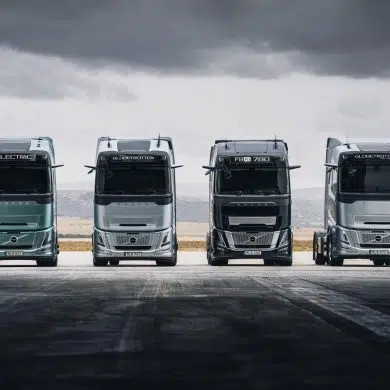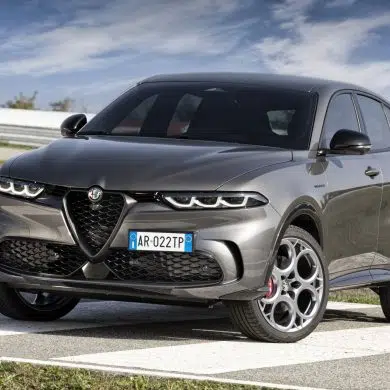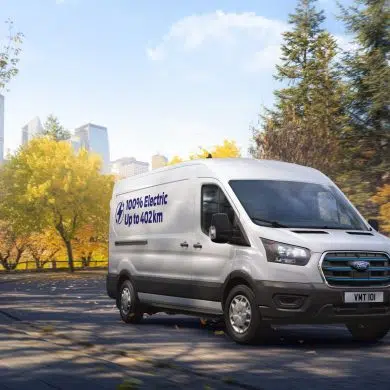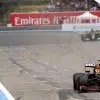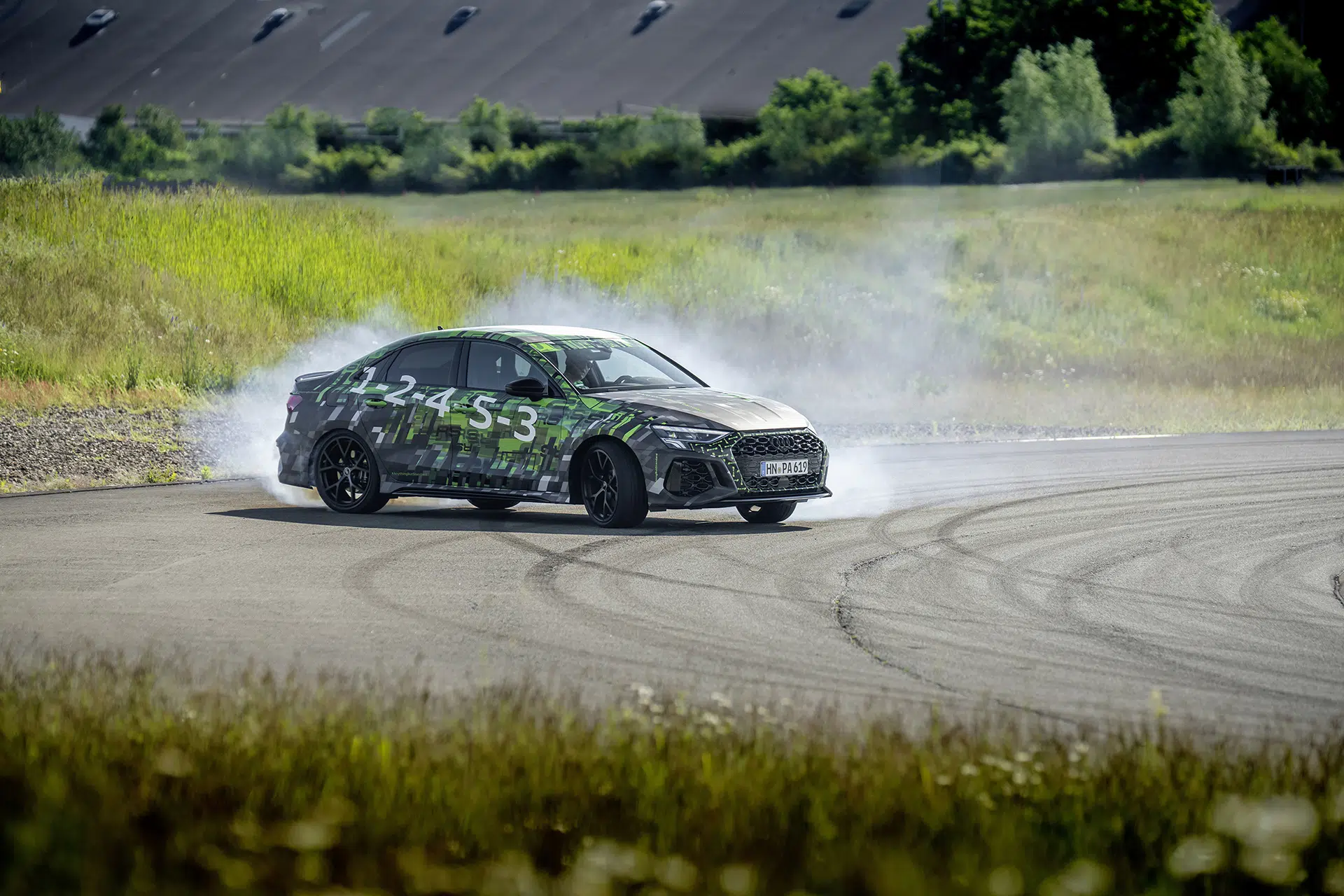
The all-wheel drive systems of Audi (call me and Quattro) as those of the brand that introduced it to us, in fact, it was always a matter of discussion. At sports models the Audi RS 3 has always been an object of interest (and dreams), since it was a "wolf in lambskin“. Almighty engines, sound from another planet and alien performance, was, is and, it seems, will be the features of the RS3. Only, on top of that, there are more, such as the... time of joy (hyperbole).
In its next generation, the new RS 3, soon to be launched by Audi at a world premiere, is the first model of the brand that owns the RS Torque Splitter, a new torque distributor that shares the torque movement between the rear wheels by fully variable How. In combination with the five-cylinder engine power 400 HP, the compact sports model promises to be extremely versatile. And we explain: Audi promises that with the new torque splitter, eliminates completely even the... thought subversion, ensures better grip in all conditions, promising best times on the track, while now releasing and drift mode for controlled sliding when it's... game time. When it comes to the engine and performance, ο 2.5 TFSI is now yielding torque 500 Nm, 20 Nm more than the previous model. The Audi RS 3 makes the sprint from standstill to 100 km/h in just under 3.8 seconds and reaches Final speed 290 km/h - class-leading performance.
The question, then, is how this power "gets out" on the road. Ο Meic Diessner, Audi's development and test engineer for the chassis and the Frank Stippler, race and test driver, who developed the car at the famous Nordschleife of the Nürburgring, explain a few key things about the torque splitter, just before the world premiere of the new RS 3 with this new technology. Let's see what and how below:
How the torque distributor works
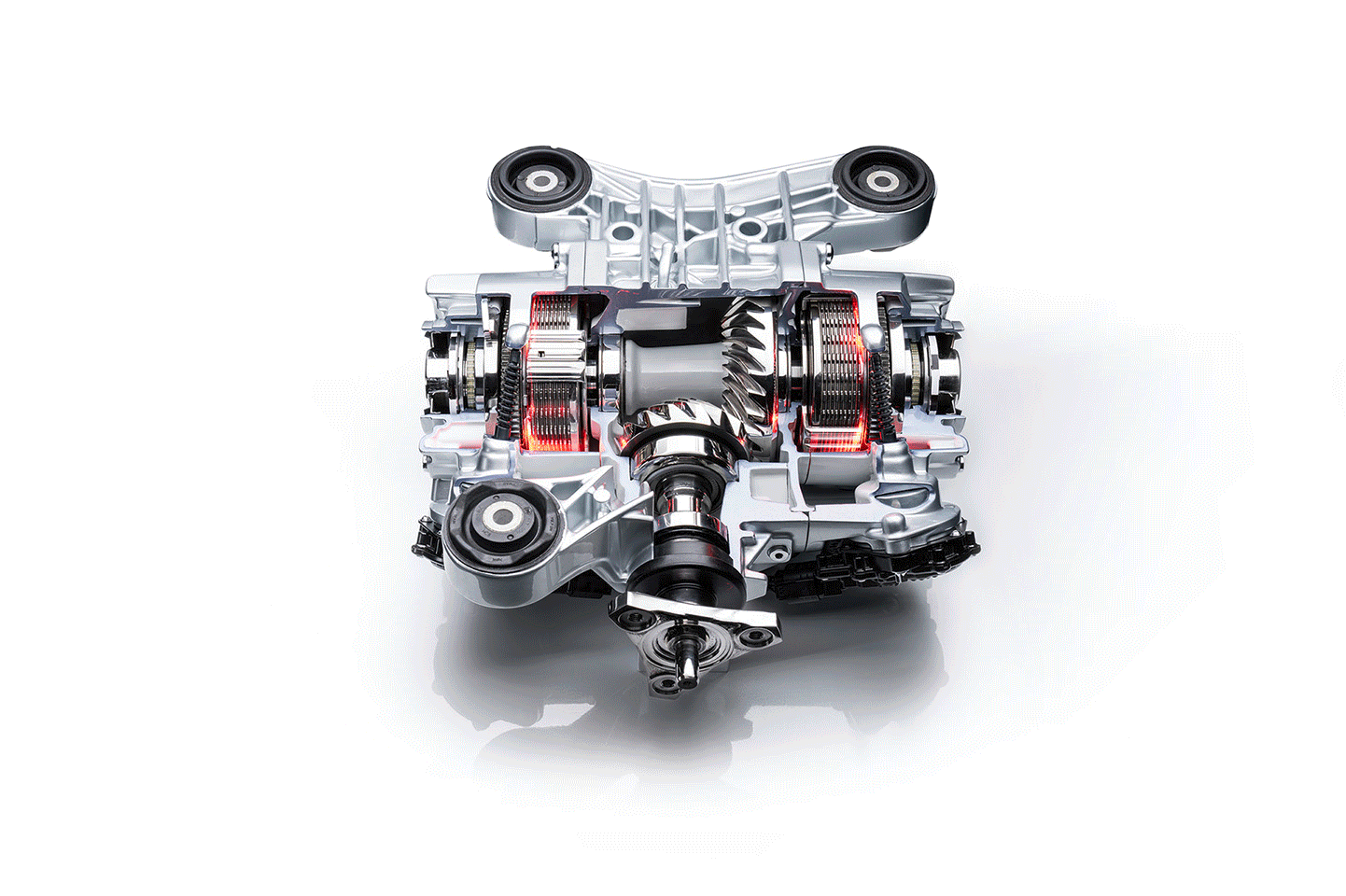
The RS Torque Splitter enables active, fully variable torque sharing between the rear wheels. In contrast to the rear axle differential and the previous multi-clutch package, the torque divider shall use one electronically controlled multi-clutch on each semi-axle. During dynamic driving, the torque divider increases the driving torque on the outer rear wheel with the highest load, which significantly reduces the tendency to reversion. In left-hand curves, it transmits the torque to the right rear wheel, in right-hand curves to the left rear wheel and in a straight line to both wheels. This results in optimum stability and maximum manoeuvrability - especially in high-speed revs. During the driving on closed tracks, the torque distributor allows controlled movements by applying all the power of the engine to a only from the rear wheels - up to 1,750 Nm of torque. The exact torque distribution always depends on the mode selected in Audi drive select and the corresponding driving mode.
Each of the two multi-disc clutches has its own control unit, which uses the wheel speed sensors the electronic stabilisation control, to measure the wheel speeds. Other influencing factors include longitudinal and lateral acceleration, steering angle, throttle pedal position, selected speed and angle of deflection, i.e. rotational movement about the vertical axis. In addition, the torque multiplier is connected to the modular vehicle dynamics controller for even better control.
Why the torque splitter improves driving performance
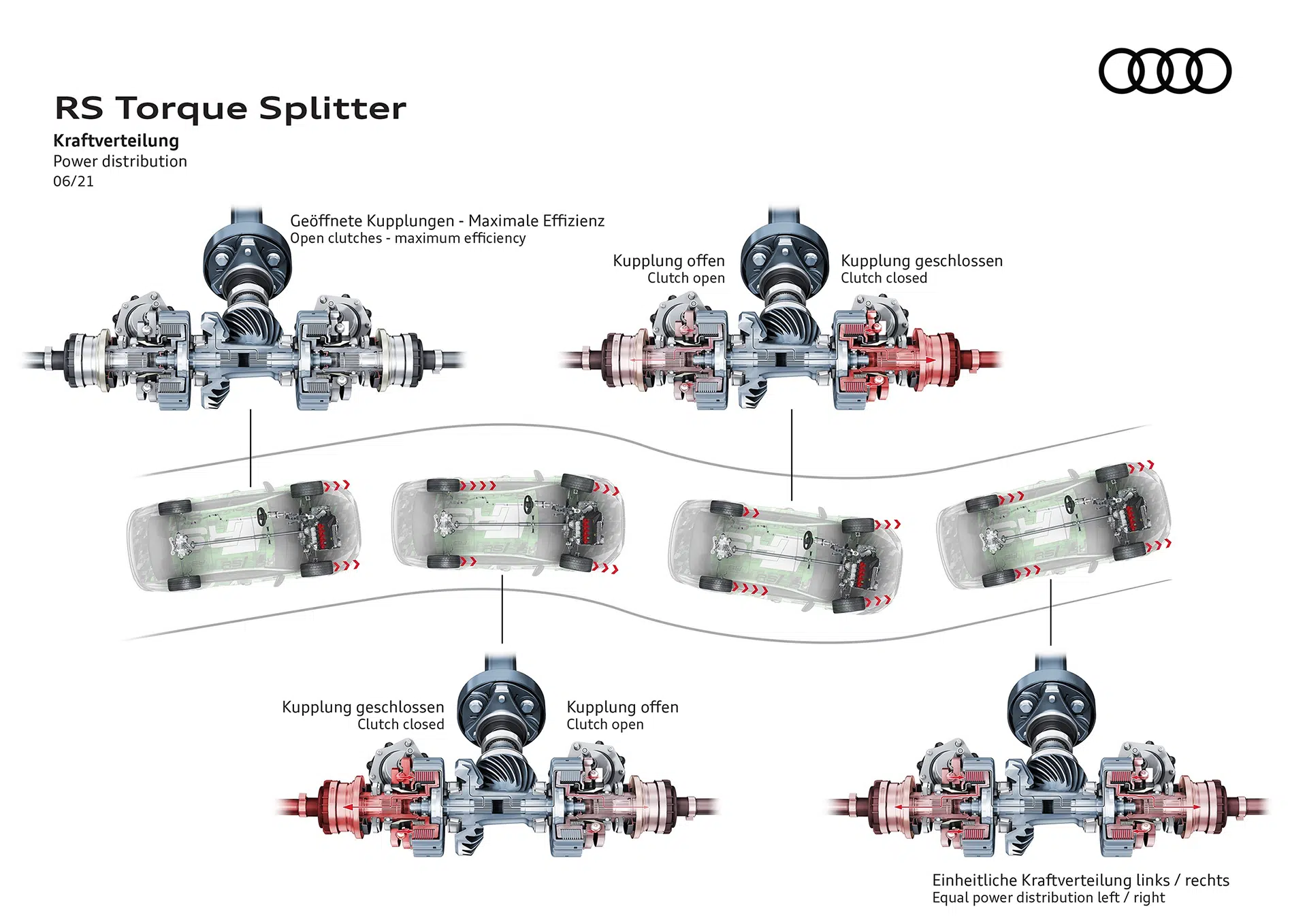
Due to the difference in propulsion forces, the car takes the corner even better and follows the steering angle precisely. This results in less backfeed, faster acceleration that occurs earlier at the exit from corners, and particularly precise and responsive handling - for added safety in everyday use and fastest lap on the track. The torque divider also compensates for the hyperventilating, directing the torque to the wheel inside the curve or, if necessary, to both wheels.
Speaking of acceleration - what's new for the engine and gearbox?
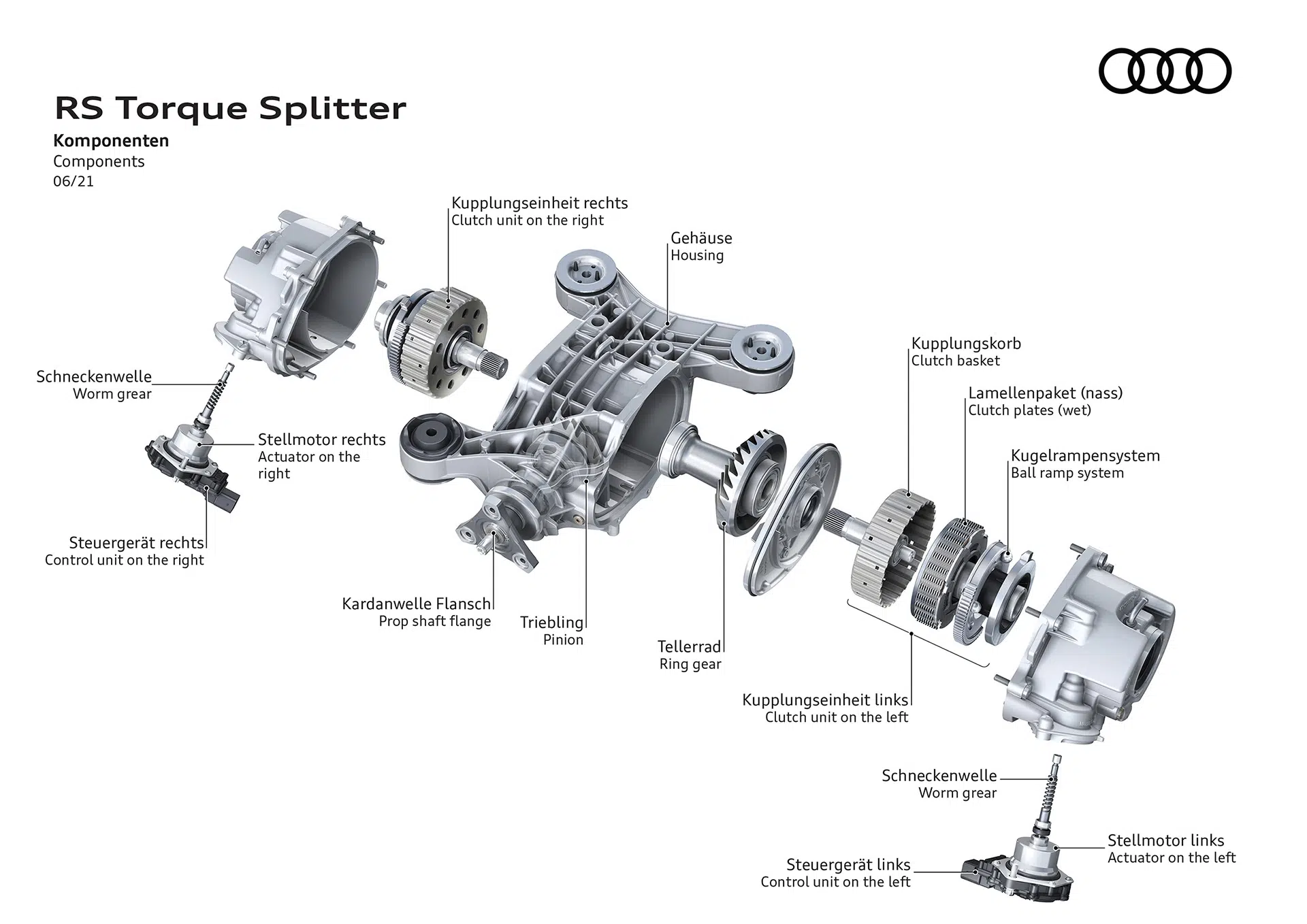
Ο five-cylinder in the new Audi RS 3 is more powerful and offers more torque. Instead of 480 Nm, the maximum of 500 Nm is now available - in a wide range of speeds from 2.250 to 5.600 rpm A new engine control unit also increases the speed and intensity with which all engine components communicate with each other. As a result, the RS 3 responds even faster, especially in low rev ranges. The maximum power of the 400 hp (294 kW) is now available in the region from 5.600 to 7.000 rpm and therefore earlier and longer than in the previous model. As a result, the compact sports car accelerates 0-100 km/h in 3.8 seconds, 0.3 seconds faster than before. The Sedan and Sportback reach their top speed in 250 km/h, although the 280 km/h are also available, optional. In fact, with the RS Dynamic package and the ceramic brakes, they can even reach a top speed of 290 km/h. This makes the RS 3 best in class in terms of acceleration and top speed. The 7-speed dual-clutch transmission effectively puts the power of the five-cylinder engine on the road - with a more robust design that takes into account increased torque and a sportier gear ratio. The intelligent interaction of all engine components, including the launch control, allows the RS 3 to change gears very quickly, resulting in quick starts and acceleration that gets the heart beating faster.
What role does the modular vehicle dynamics controller;
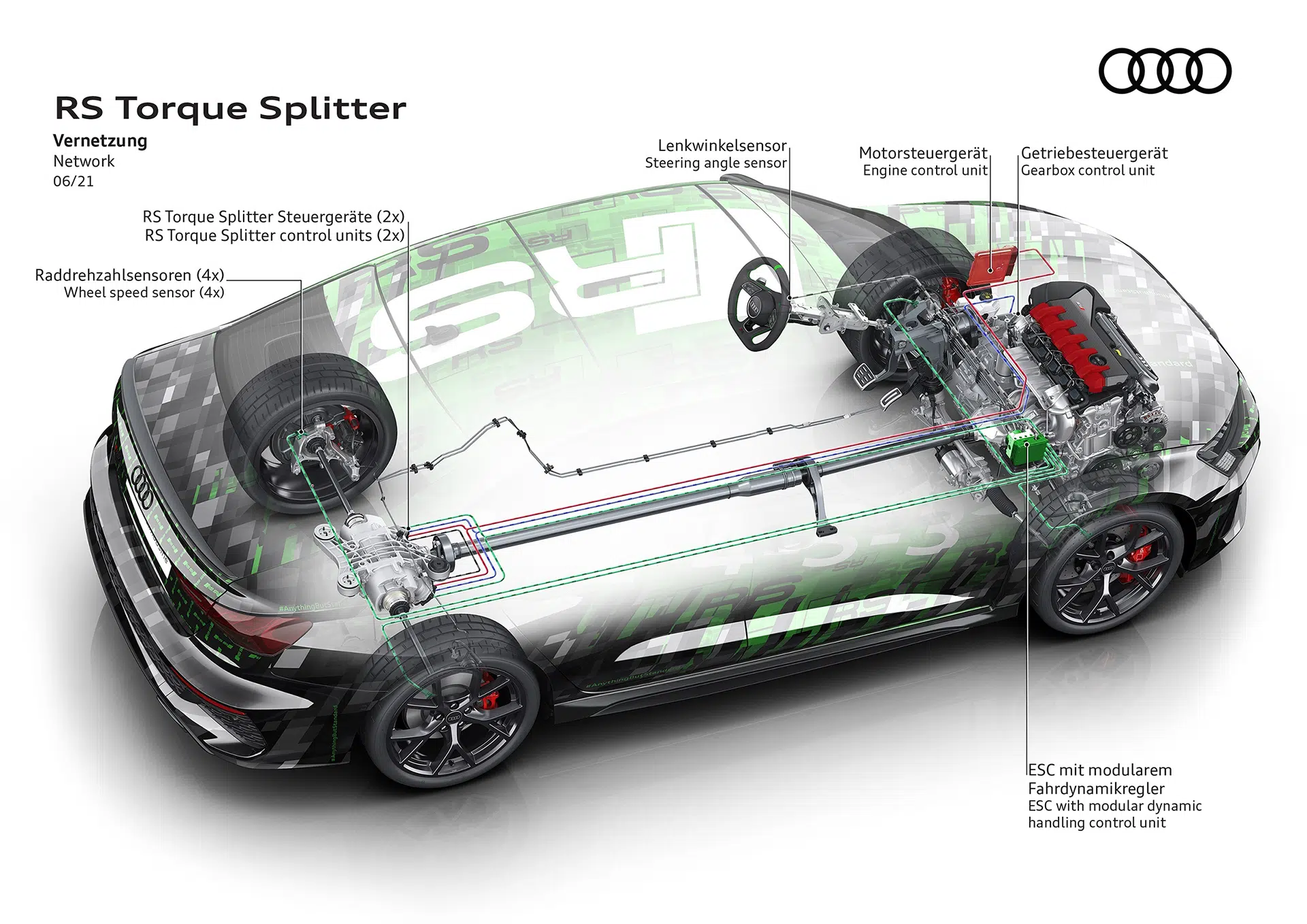
After its use in A3 and S3, the modular vehicle dynamics controller (mVDC) also ensures that the framework systems interact more accurately and faster in the new RS 3. To do this, the central system captures data from all components related to the lateral dynamics. The mVDC synchronizes the two torque control modules, the adaptive dampers and the torque control on each wheel for high-precision driving and handling. Overall, it increases the flexibility of the entire vehicle, especially on dynamic routes.
What effect does the Audi drive select on driving performance?
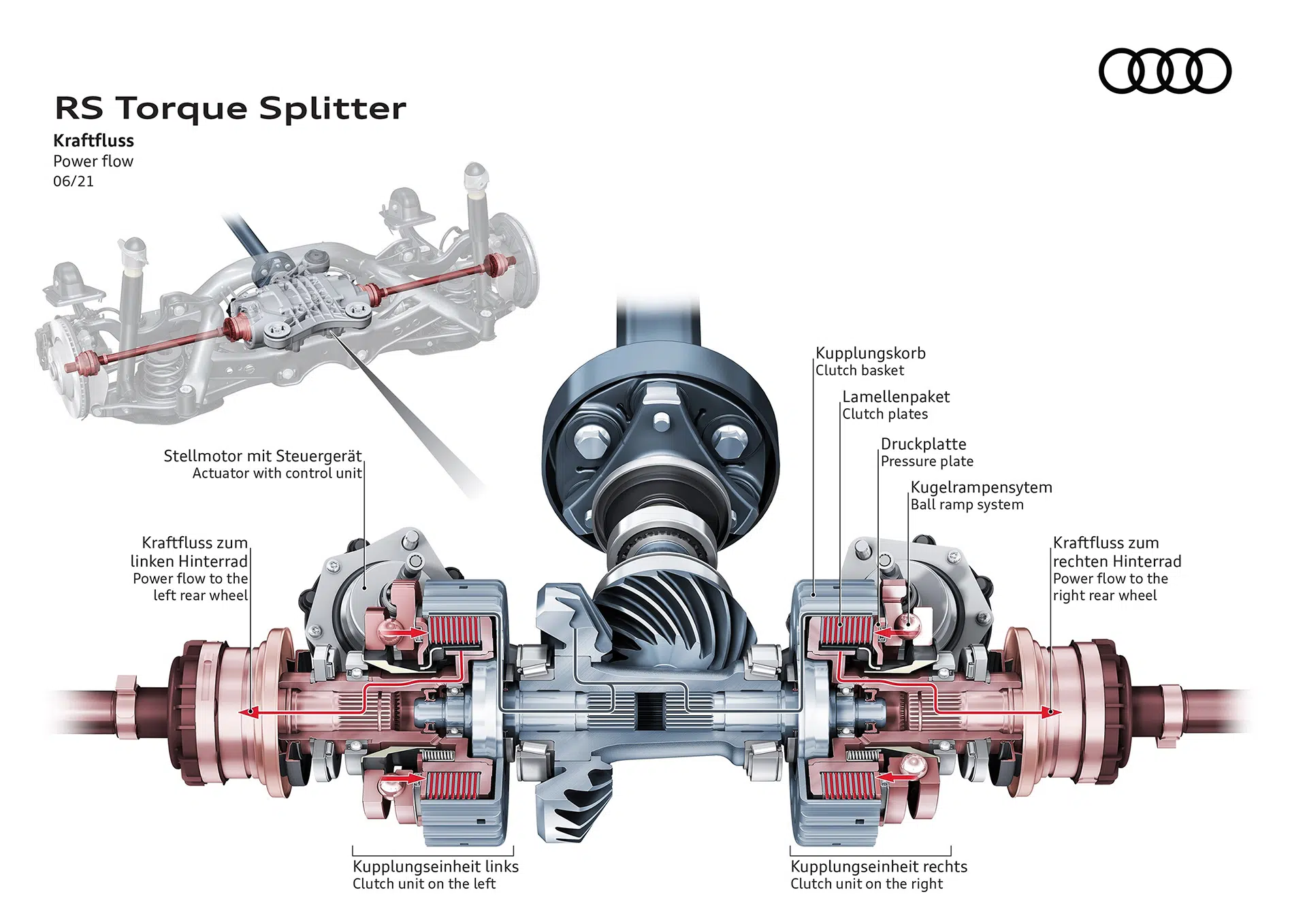
The Dynamic Steering System Audi drive select in the new RS 3 offers seven functions: Comfort, Auto, Dynamic, Efficiency, as well as RS Individual, RS Performance and RS Torque Rear. Depending on the selected mode, the characteristics of the driveline and chassis components change from emphasis on the comfort at extremely dynamic, even optimized on the track Performance. In addition to the torque splitter, Audi drive select also has an effect on the engine and gearbox characteristics, power steering, adaptive dampers and on the exhaust fins. Different characteristic curves for each of the aforementioned systems create a wide range of driving experiences.
In RS Individual mode, each system can be individually configured within its predefined characteristic curves. At Dynamic function, all the elements have been shaped for sporty driving. The driver feels this with a more responsive steering response and highly responsive handling for dynamic driving, with a clearly perceptible engine sound. The Changes gearbox of the S tronic is shorter, the acceleration even sportier. The ultimate in dynamic behaviour can be experienced in Dynamic mode and in the new, RS 3-specific mode RS Torque Rear.
How is the torque divider integrated into the dynamic steering system?
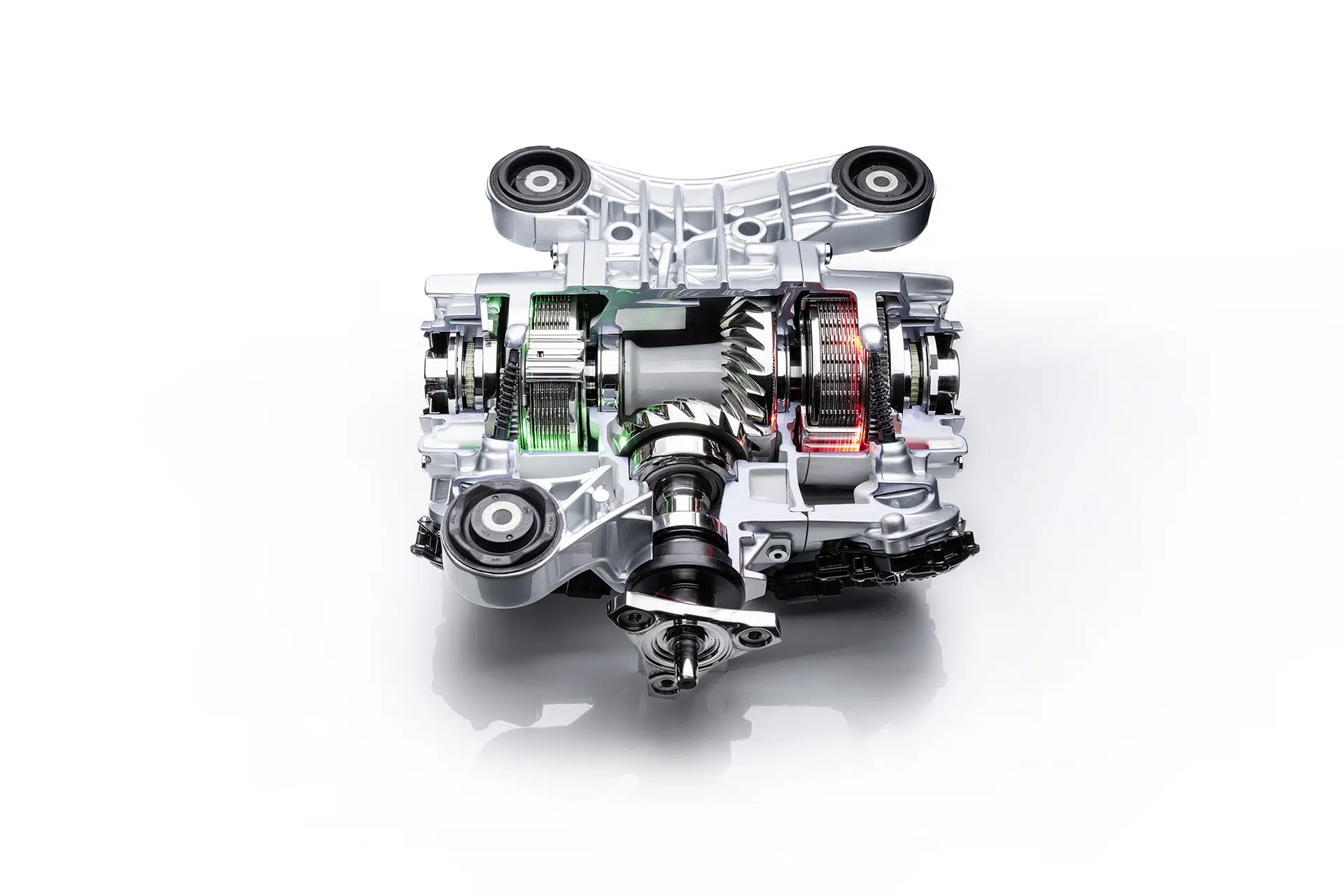
Audi drive select modifies the characteristics of the torque splitter and thus the handling of the car depending on the selected mode. Five characteristic curves - Comfort/Efficiency, Auto, Dynamic, RS Performance and RS Torque Rear - are stored in the system. In this context, the engine power is distributed on all four wheels in Comfort/Efficiency modes, with priority on the front axle. In the function Car, the torque distribution is balanced, which means that the RS 3 does not subvert nor does it overshoot. Η Dynamic function, on the other hand, tends to transmit as much torque as possible on the rear axle - for maximum flexibility and increased dynamics. This reaches perfection in operation RS Torque Rear, which allows the driver to perform controlled sideways slides on a track. The rear axle-focused power distribution of the engine leads to hypertrophic behaviour, with up to 100% of drive torque be directed backwards leading to the wheel on the outside of the curve. In addition, Audi has adapted the characteristics of the engine and gearbox. This particular setup is also used by the RS Performance Mode, which is designed for the track. It is specially tuned to the semi-slick performance tyres Pirelli P Zero "Trofeo R", which are optionally available for the first time from the factory. In this mode, the torque splitter provides a particularly dynamic, sporty longitudinal axis ride with as little understeer and oversteer as possible. This results in fast acceleration at the rev outputs and thus best lap times.
Electronic stabilization control - activated, Sport or disabled?
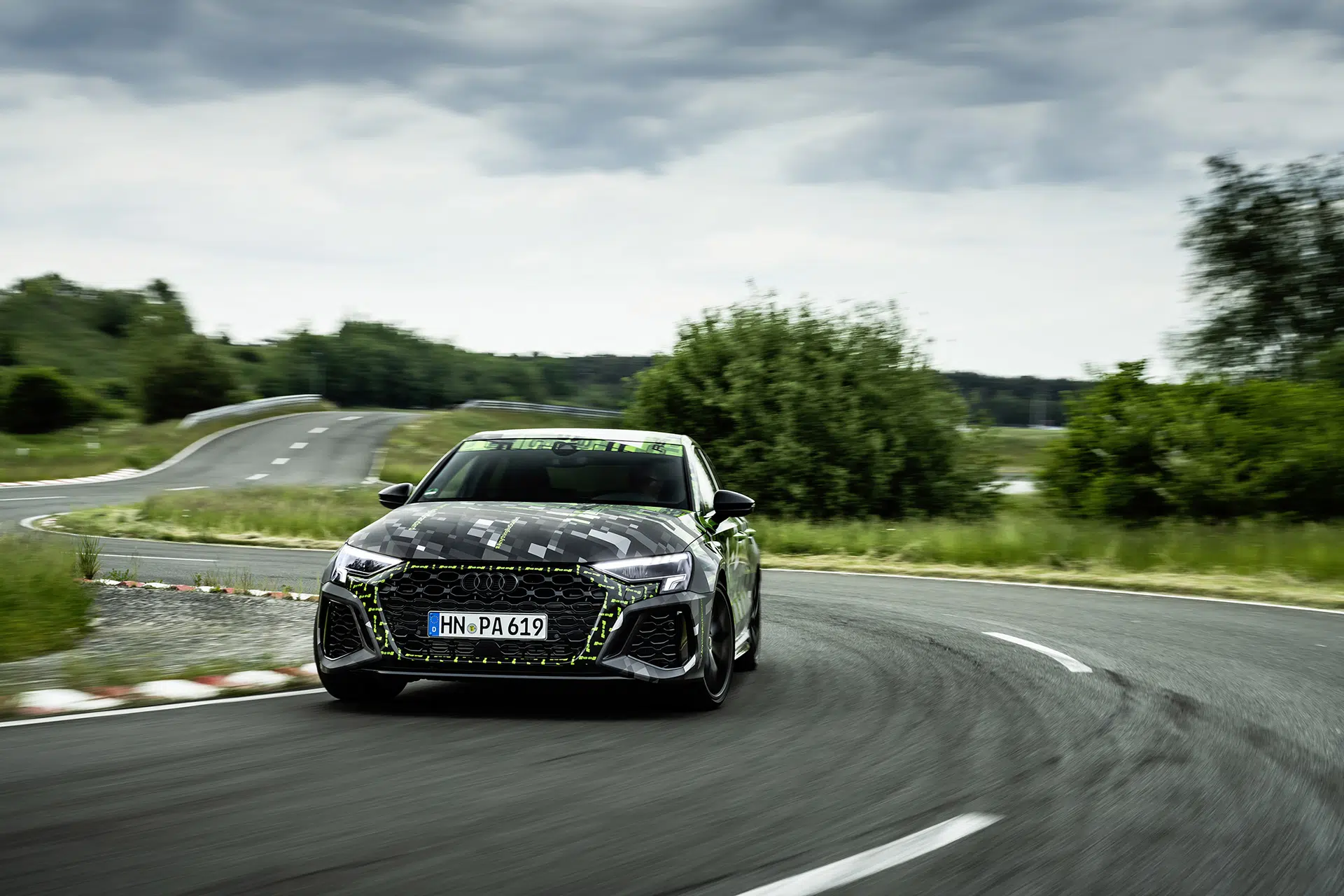
The electronic stabilisation control (ESC) in the RS 3 has been specifically adapted to the RS 3's torque splitter, suspension, tyres and new RS driving modes. It works even faster and more precisely than in the previous model. ESC can be set to Sport mode and the RS performance driving mode has been set to ESC Sport at the factory. For particularly sporty driving - on circuits, for example - ESC can also be switched off completely by holding down the button on the centre console for more than three seconds.
More precision, more stability - how are shock absorbers shaped?
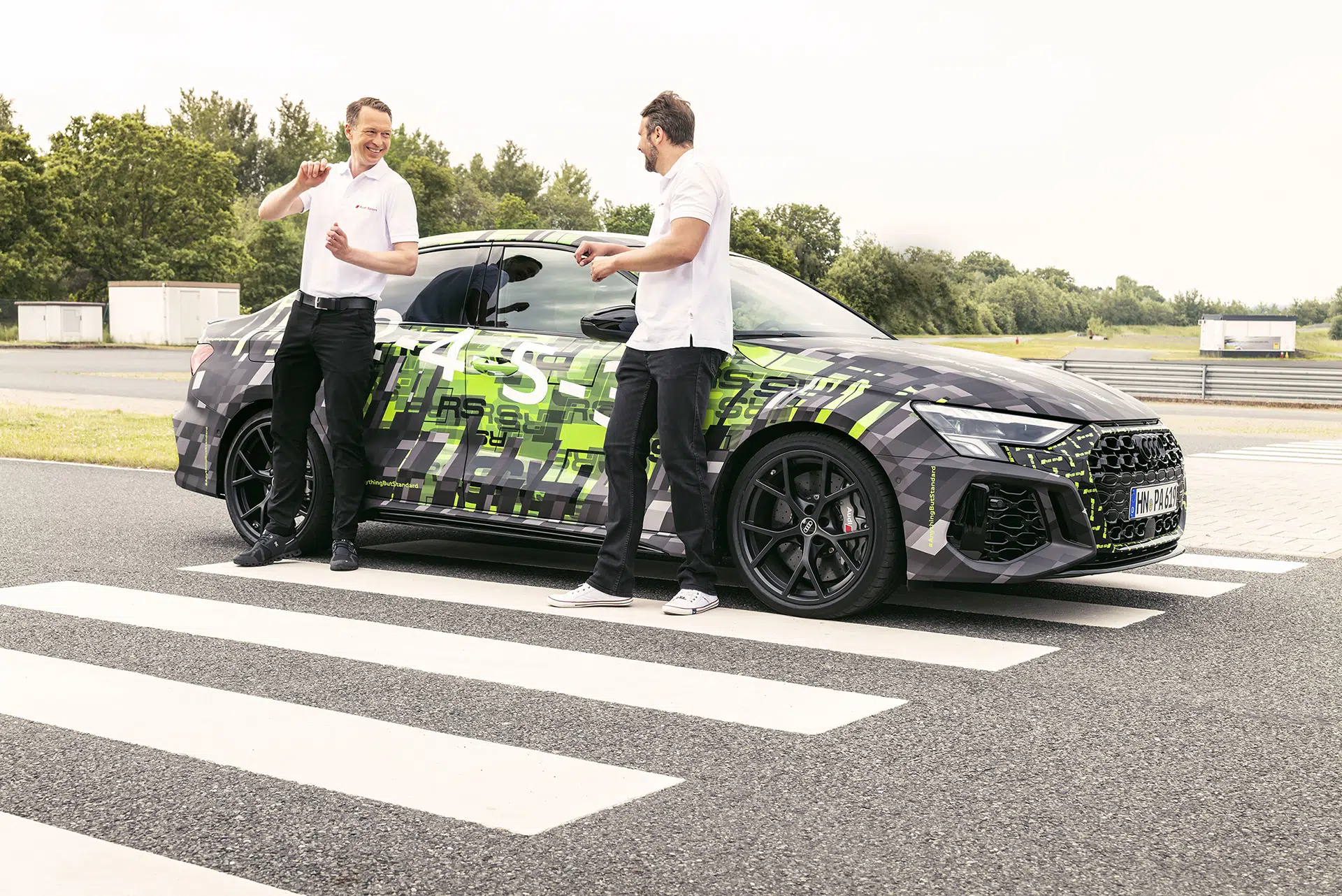
The standard RS sports suspension features new shock absorbers and valve system, both specifically for the RS 3. The valves ensure that the shock absorbers have a particularly sensitive response as part of their characteristics. This allows the suspension to respond to the respective driving situation even faster and more efficiently.
The sports suspension RS plus with adaptive damper control available as an option. It continuously and individually adjusts each shock absorber to the road conditions, driving situation and mode selected in Audi drive select. The three characteristic curves comfortable, balanced and sporty provide a clearly perceptible experience of the shock absorber characteristics. The ideal damping force is calculated within milliseconds - low for bumper cars, high for supporting the vehicle body during fast cornering or braking. To do this, the sensors measure the vertical acceleration of the bodywork and the movement of the individual wheels in relation to it. This results in increased dynamics and excellent driving stability with even greater comfort compared to the RS sports suspension. In RS Individual mode, the shock absorbers can be configured according to individual requirements and road conditions within the three characteristic curves. In RS Performance mode, there is a special comfort setting for the shock absorbers that minimises vertical excitation and provides optimal support for smooth lateral dynamics - especially suitable for track with uneven surfaces, such as the Nordschleife.
What other elements contribute to increasing driving dynamics?
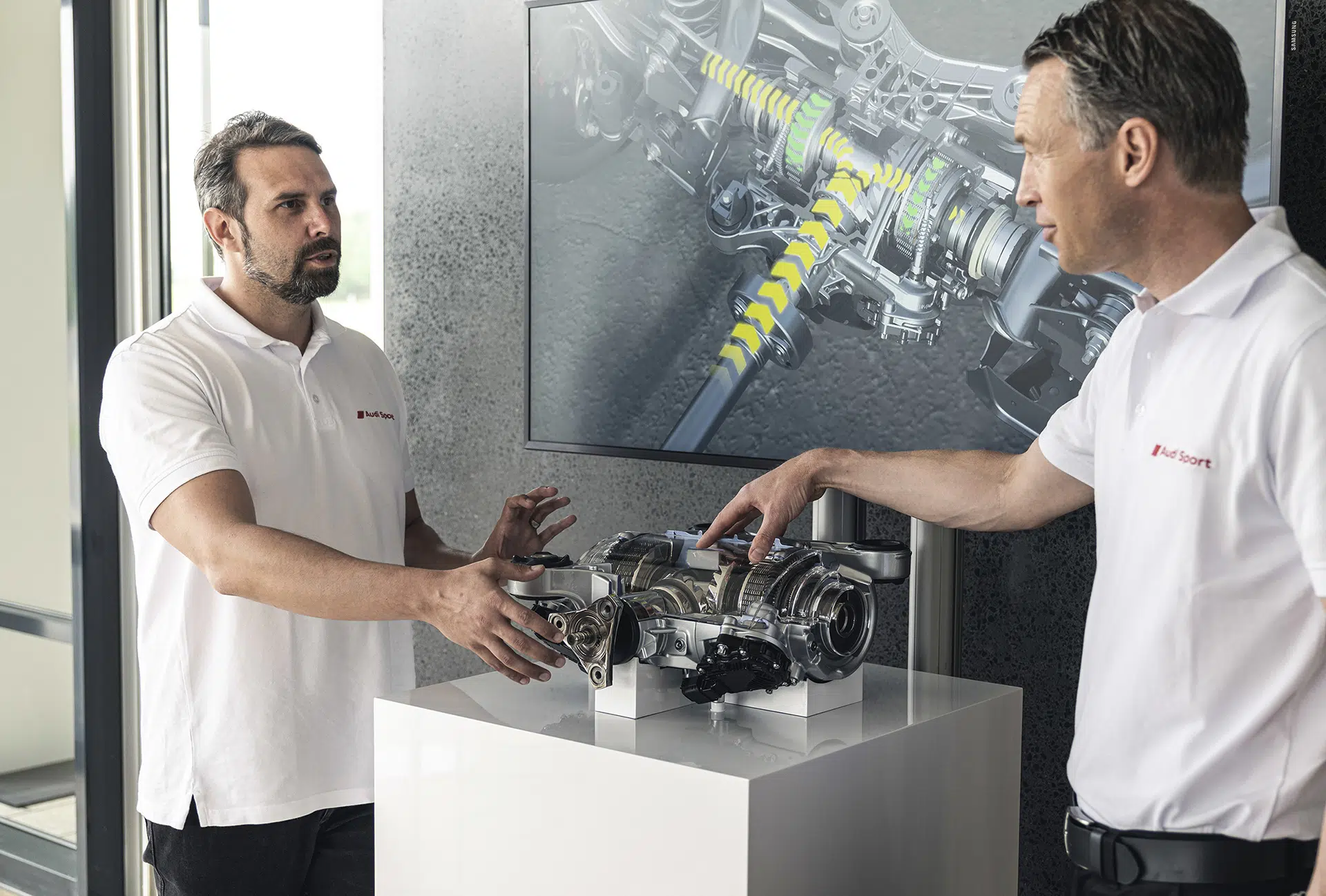
Η adjustment of springs and shock absorbers is extremely hard and the body is ten millimetres lower from the Audi S3 and 25 mm lower than in A3. This lowers the vehicle's centre of gravity further towards the road. Installed at the front is a McPherson knee suspension with RS 3-specific rotary bearings, reinforced lower swingarms, subframes and stabilizers. To increase cornering power, i.e. to provide more grip on curves and more dynamic cornering, the Audi RS 3 has just under half a degree of additional negative camber compared to the A3. This increased slope to the road surface, i.e. the greater angle between the wheel and the vertical, also results in a more precise steering response. Ο rear axle Features four link design with a separate shock absorber assembly, subframe and tubular anti-roll bar, mounted on the torque converter. The reinforced wheel carriers increase the lateral dynamics as well as the response to steering movements and thus the vehicle's manoeuvrability.
The RS-specific progressive steering varies the gear ratio according to the steering angle - as the steering angle increases, the gear ratio becomes smaller and the ride more direct. It also helps speed-based and can be varied via Audi drive select within the three characteristic curves of comfortable, balanced and sporty. In this way, the torque splitter and other innovative vehicle components perfectly put the dynamic power of the new Audi RS 3 on the road in every driving situation.



